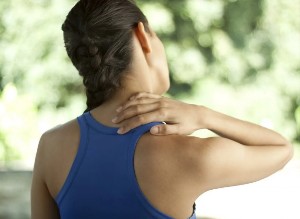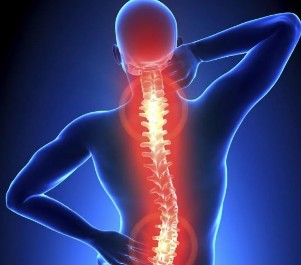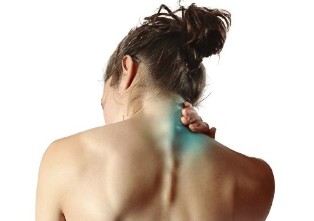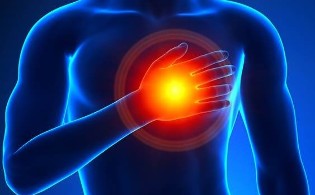Osteochondrosis of the cervical spine is a progressive disease which is a degenerative changes in the intervertebral discs, accompanied by a in their volume, and changes in the structure of the.

The cause of the disease. The main reason for doing this is in violation of metabolic processes in the body and as a result, the impairment of the blood supply of the intervertebral discs. Less commonly, the disease occurs as a result of injury to the cervical of the spinal column. They contribute to the formation of degenerative disc disease: year-round a way of life, incorrect posture, long-term "sitting" at the Table in front of the computer, etc.
Osteochondrosis of the cervical spine, the treatment at the clinic
The treatment of cervical degenerative disease of the disk the clinic conducts, the methods of the Soviet of medicine and health. In the process, the methods of treatment used by the Dalai lama the medical – a point of of massage and herbal medicine the methods of Chinese medicine it is, first and foremost, acupuncture and moxibustion. It is possible to make use of a soft manual therapy, osteopathy, (including the "cranio-sacral-techniques", which are the method of the soft effects in the bone and soft structures of the skull; the purpose of the method - the restoration of the proper flow of the cerebrospinal fluid), and the other the methods that are available to physicians in the clinic.

The treatment of degenerative disc disease of the cervical the spine is one of the basic directions of activity of the clinic. It is based a lot of experience in this area, it can be said that the results of the the treatment of this disease, including the complex operation, and a hernia of the spinal column) is quite satisfactory. The treatment of degenerative cervical disc disease is selected for each of the patients individually and it is complex (in the process of the implementation of the a session usually consists of multiple treatments, the duration of the session – 1-1,5 hours). Pain in the cervical spine, is usually removed up to 70% after 2 to 3 the medical session. Treatment of osteochondrosis, on average, from 5 to 11, and the meetings of the. In the course of treatment produced effects on the pathological changes in the in the body, which is caused by the occurrence of the disease.
Characteristics of osteochondrosis of cervical spine
Cervical osteochondrosis, compared to the thoracic and lumbar osteochondrosis has a number of features. These characteristics are determined, and the main way, the characteristics of the structure of the cervical vertebrae, the size of the bone structure of the that is a bit smaller than the vertebrae in the other sections. Of the cervix - the the movable spines, have the head all the time it is loaded. Osteochondrosis often affects the most of the mobile segment (the root-5 to S-7) - this defines the end of the the symptoms of degenerative disc disease of the cervix.
The neck is relatively small, the volume of the there are a number of cardio-vascular and nervous structures, including here the vertebral artery, which supplies blood to the back parts of the brain in the medulla oblongata, and the cerebellum. When the compression of the vertebral artery, due to the reduction of the the traffic of the result of the stenosis can develop ischemia of the brain, and the the spinal cord, as in acute cases, it can lead to stroke spinae. The symptoms of a vertebral artery - dizziness, impaired coordination, of movement, impairment of hearing and vision.
Due to the compactness of the cervical, small the shift of the vertebrae, or muscle tension can cause nerve compression endings (a pinched nerve in the cervical spine), or of vascular structures. Consequently, over time osteophytes, in the sense of the compactness of the cervical worse of the situation.

Cervical osteochondrosis leads to the formation of the protrusion and hernia of the spinal column, which include, in addition to the above-mentioned reasons, the tension of the muscles, dislocation of the neck, formation of osteophytes), comprimarea the nerve root this causes swelling and inflammation of the joint. In the end, given the small size of the vertebrae of the the channel of the cervical spine is to the entire volume of the more compremised (compression occurs in the spinal canal). The clinical symptoms of this the condition - severe pain.
Osteochondrosis can lead to compression of the spinal cord, and due to the narrowness of the vertebral canal of the cervical the spine is more common than in the thoracic and lumbar parts of the spinal column. In this case, the in the affected area, not just the neck and head, but also the top (which is the more and more often), and the lower limbs. It is in the nature of cervical osteochondrosis frequently compared to lumbar, and thoracic), leads the patient to disability.
Summing up, here are the factors that will determine the compression of the different vascular and the nerve structures in the cervical osteochondrosis
- Displacement (slippage) of the vertebrae the disc spondylolisthesis. The most common displacement is minimal, because even a small offset to the the vertebrae of the cervical spine causing the paralysis, and is often the cause of the death of the the result of the.
- Protrusions and hernias of the spine , as a result of the development of osteochondrosis of the cervical the spine and into the spinal canal.
- Osteophytes. As a result of degenerative changes, cervical disc disease, on the sides of the from the bodies of the vertebrae, and the joints formed bony growths - osteophytes. Osteophytes, which are located on the sides of the vertebral bodies adjacent to annoy him muscle, tone and increases. This increases the load on the spindle, which leads to an increase in the pressure in the intervertebral disc the height of the it reduces, increasing the risk of protrusion of the in the intervertebral disc. Osteophytes, which are aimed in the direction of the channel, where the the vertebral artery may lead to its stenosis.
- The reduction of the height of the vertebral disc (the flattening of the intervertebral disc), it is often the result of compression of nerve roots, with a reduction of the the intervertebral foramen. In addition, in this case, if you fail to turn the neck is a possible subluxation of the cervical vertebrae, thereby causing additional compression of the.

Cervical degenerative disc symptoms of the disease
The symptoms of degenerative disc disease of the cervical the spinal column is subject first of all, what was the target to beat. Distinguished: radicular syndrome, or compression of the spinal roots), compression of the the spinal cord, ischemia of the spinal cord due to a stenosis of the vertebral artery which impaired the circulation of blood in-the brain stem, cerebellum, cranial the nerves and the inner ear. Here are some of the common syndromes.
- Radicular syndromes of cervical radiculitis. Derive the roots of the comprimarea (a pinched nerve in the cervical spine). The following symptoms of cervical degenerative disc disease related to the with a pinching (compression) of nerve roots. The pain radiates from the neck down to the shoulder and then the shoulder, of the forearm (on the outside of its surface), on your toes the hands of the. There may be pasty, "to the needles", tingling, the forearm, wrist, and fingers. In addition to this, it depends on which segment of the affected by the symptoms of cervical osteochondrosis are different. For example, the with the defeat of the Central nervous root, which is pasty the thumb, the index and the middle finger, and with the defeat of the roots of the brachial nerve - ring and the little finger ... (the rest of the symptoms are the same).
- Irritative-reflectory syndromes. Symptoms: searing pain in the cervical-occipital in the region or in the neck (according to the sleep mode, when you turn your head, sneeze, etc.). Possible irradiation in the shoulder and chest.
- The vertebral artery syndrome in the cervical osteochondrosis. Symptoms: throbbing, or a "burning" headache gripping the back of the head, the temple of darkness the area above the eyebrows. The pain is often continuous, less paroxysmal, increases the after a long stay in an uncomfortable position during the journey. The General weakness of the body weakness, loss of consciousness. There can be up to one audio, disturbance: noise, decrease in vision, vestibular disorder. Patients with the disease of the coronary arteries may increase your blood pressure, the pressure, the pain in the region of the heart. Maybe the reduction of visual acuity, pain in the eye, etc.
- One of the syndrome. The symptoms of degenerative disc disease in the syndrome of similar to the symptoms of true angina pectoris. It is assumed that the contraction of the muscles of the heart, caused by the compression of the spinal roots of the lower segments of the cervical spine are the her reflex response. Heart syndrome occurs when the irritation of the roots of the the pectoralis major muscle or the phrenic nerve roots, because of its fibers, go to the pericardium. The clinical symptoms are: squeezing pain in the region of the heart. The pain may be paroxysmal, and it may take up to a few hours at a time. The increase in with a sharp turn of the head, coughing, sneezing. Maybe, tachycardia, arrythmia. Coronarosclerosis it means the pain is removed. The ECG recorded during the the assault shows no signs of violation of the coronary circulation.

































